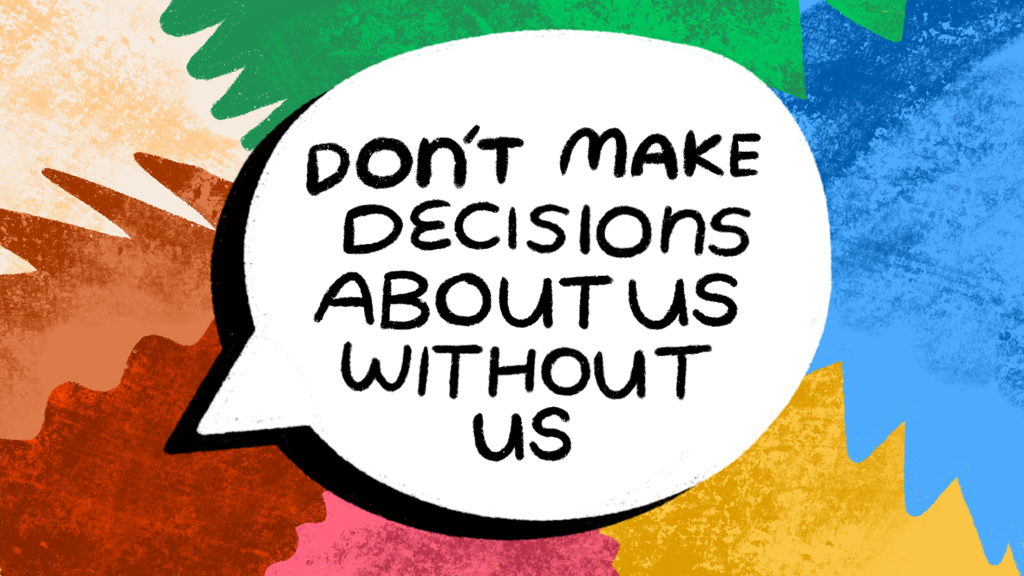Back in February, I had the incredible opportunity to travel with the Service Members, Veterans, and their Families (SMVF) Technical Assistance (TA) Center to Oklahoma City, Oklahoma, for their American Indian and Alaskan Native (AI/AN) SMVF Expert Panel Discussion. The purpose of this gathering was to listen to public health representatives from AI/AN communities and learn about the challenges and barriers they face in accessing suicide prevention resources and services for AI/AN SMVF. This was the initial meeting to discuss developing and disseminating culturally informed resources and training for the Governor’s Challenge to Prevent Suicide Among SMVF. After the 2-day event, I returned home with a new understanding of the historical, systemic, and intersectional factors that impact the experiences of AI/AN SMVF communities. Here are some takeaways that deeply resonated with me.
Don’t Impose Help; Be Collaborative
There is a complex history of distrust, performative engagement, and betrayal between the federal government and AI/AN people. Although attempts have been made to build trust, the AI/AN community is wary of being included in panels without witnessing tangible actions. It’s easy to assume that our best practices apply universally, but we have much to learn from the communities we strive to support. Instead of going into communities with the intent of telling them how all their problems can be solved, give them a chance to tell us their experiences, strengths, and hopes. By acknowledging our own limitations and seeking out knowledge and perspectives from those with lived experiences, we can create more impact.
Don’t Make Decisions About Us Without Us
When it comes to decisions directly impacting AI/AN people, it is crucial to prioritize their input and involvement. Public health is often viewed through a Western lens, which unfortunately leads to overlooking the strengths and existing best practices found within tribal communities. With 574 federally recognized tribes and a significant portion of the Indigenous population residing in urban areas, it’s evident that a one-size-fits-all approach won’t be sufficient. The wealth of regional and cultural diversity presents us with a tapestry of unique customs, approaches, and histories. Understanding and appreciating this interconnectedness allows us to imagine solutions that truly resonate with and address the specific needs of each community.
Listen With Humility
In order to fully comprehend and dismantle the obstacles perpetuated by our systems, we must genuinely listen, even when it becomes uncomfortable. For example, during the convening, the panel was asked for feedback on some existing tools that could be “adapted” to fit the needs of AI/AN SMVF. To our surprise, the room fell silent for an extended period. Eventually, one of the speakers informed us that, in some AI/AN communities, silence indicates strong disagreement. Initially, I felt worried and uncertain about the direction the conversation could take. However, what followed was invaluable feedback and constructive criticism. We learned that the proposed tool had the potential to confine AI/AN individuals and possibly oversimplify their experiences for non-AI/AN individuals. The group cautioned us about the risk of creating a product that might fail to capture the strengths, experiences, and diversity of Indigenous people.
Celebrate and Educate
Generational trauma emerged as a recurring theme in every discussion. However, there was a resounding call to develop tools that educate non-AI/AN individuals about the rich cultural and historical contributions and achievements of AI/AN SMVF to our nation and military. It’s important to note that Indigenous people are incredibly resilient out of necessity, but these burdens are perpetuated by a lack of representation, harmful stereotypes, and inadequate suicide prevention services in our public health systems. By creating culturally informed tools and sharing uplifting stories that educate and celebrate the resilience and strengths of Indigenous people, we can inspire hope and foster healing. Above all, it is essential that AI/AN SMVF voices guide and inform this work, forging a more equitable path for Veterans to return home with the necessary supports and resources they deserve.


